‘The Parties Have Changed My Life’: Yetunde Adebiyi on her Photography, Refugee Solidarity and Parties
September 2, 2017
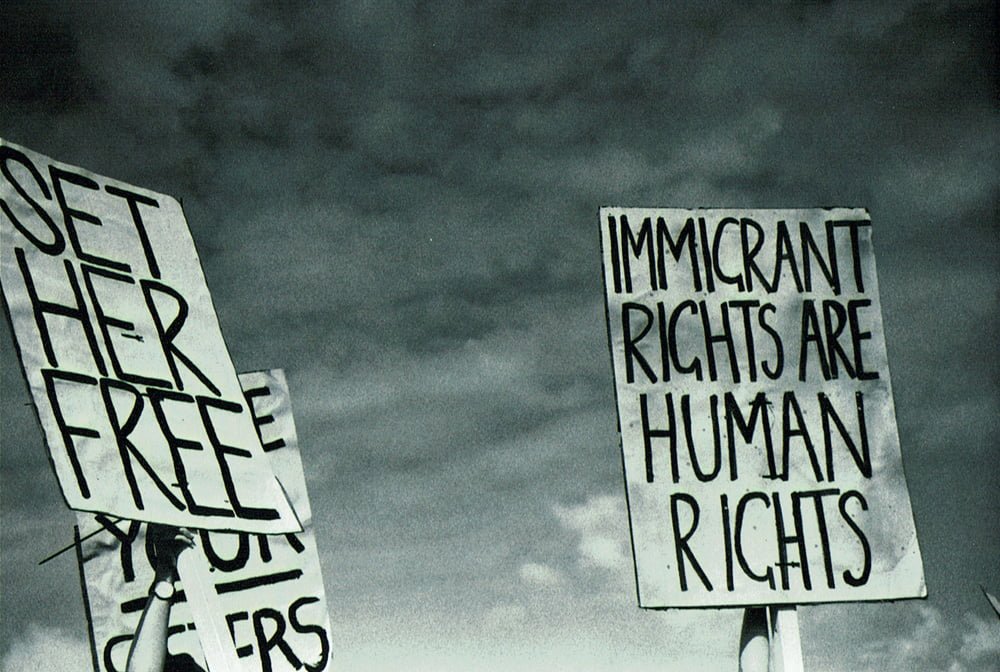
This interview has also been published by Open Eye, here.
As Open 3: Affecting Change’ at Open Eye Gallery moves into it’s final few weeks, Maja Lorkowska talked to some of the participating artists about their contribution to the show. Affecting Change documents local projects going on in Liverpool that, in some way, engender positive change for the city and its people. The photographers worked with projects such as News From Nowhere, Liverpool’s finest feminist-run book shop (‘the real Amazons’), to those advocating for positive development in the North Docks.
One of the projects that forms part of the exhibition is a collaboration between photographer Yetunde Adebiyi and Between the Borders. The project explores contemporary migration and movement through three activities: producing a zine, protesting against the conditions of detainees at Yarl’s Wood Immigration Removal Centre and organising parties that provide a safe and inclusive space for both UK citizens and people seeking asylum or refuge in the UK.
The parties started as a way of raising money for S.T.A.R. – Student Action for Refugees, and continued due to their popularity and the organisers’ desire to stay involved in helping organisations like Asylum Link and Calais Migrant Solidarity. Through the parties, Yetunde Adebiyi became involved with Between The Borders, a collective that provides a platform for the creative expression of new migrants and asylum seekers. They publish a zine, organise workshops and host events that provide an open forum for people with and without UK citizenship.
From making friends for life to making political statements, all three say that it really was just ‘a damn good party’. Thanks to Adebiyi’s watchful gaze, we can now see some of their experiences caught on film.
ML: Where did the idea for the parties come from?
AN: We don’t really have an answer for this… We met at university. The year that we started putting on parties was the year that I became politicised; it was the year that I found out that my mum was a refugee. I got interested in Asylum Link Merseyside and refugee health, because I work in healthcare. Theo took me to a party once, a reggae party at this old warehouse, and I really liked the space. This was about six or seven years ago. We had this inkling that we wanted to put on our own party.
ML: Tell me about what the vibe was like, how did you make it welcoming for everyone? How did you promote it?
TT: We created Facebook events and had invitations – I think invitations were quite important. We didn’t give them out to people we didn’t know but we actually invited people rather than just give them away. There were quite a lot of people who came randomly too.
AN: We just really didn’t want it to be gimmicky. We wanted it to speak for itself and have people judge it for themselves. And that’s why we didn’t give it a name. And because it’s always been free entry for asylum seekers and refugees, we wanted them to have a lot of ownership of the parties. We tried to make the music as inclusive as possible as well, with lots of different genres. There were the non-music activities too, like film projections upstairs.
TT: I guess it was a party which reached out to people. Sometimes there were a lot of people who came from Asylum Link too and many are still friends now. It was like an extra place to hang out, not just a party space where you’re dancing but also a place where you can just hang out. That’s just the architecture of the place.
AN: It just makes it safe, a little bit enclosed. Usually, at parties if you want to be away from the party, you have to go out and have a smoke. I don’t even smoke! So I know lots of people would come to the party and not even dance, but just spend time together.
ML: Did the parties come before your political idea?
AN: Still, even now, I don’t have a clear political outlook that informs things that I do artistically. That was just a little factor, that maybe influenced the things I was interested in, because at the time, in terms of nightlife, I didn’t really particularly enjoy going out that much. There was one night, which was so good it unlocked a crazy dancing machine in me (laughter) so I wanted to replicate that.
ML: What were people’s responses?
AN: There has been a variety of responses, just as you would get from any event. Some people were really committed, came every time.
TT: Some people came every now and again. We were all students too and lot of people weren’t from Liverpool, so it was interesting having students and refugees, both not from Liverpool, everyone still getting to know the city through parties.
AN: I think dancing together crazily, and seeing people who don’t know each other do that together; you’d see some people going really mad, and that’s a cool feeling.
TT: Or people showing each other dance moves from their country, that was the best thing to see. Personally I associate with that Palestinian dancing, it’s kinda like Cossack dancing. I remember once there was just a dance song playing and people all started doing this Cossack move and that was brilliant.
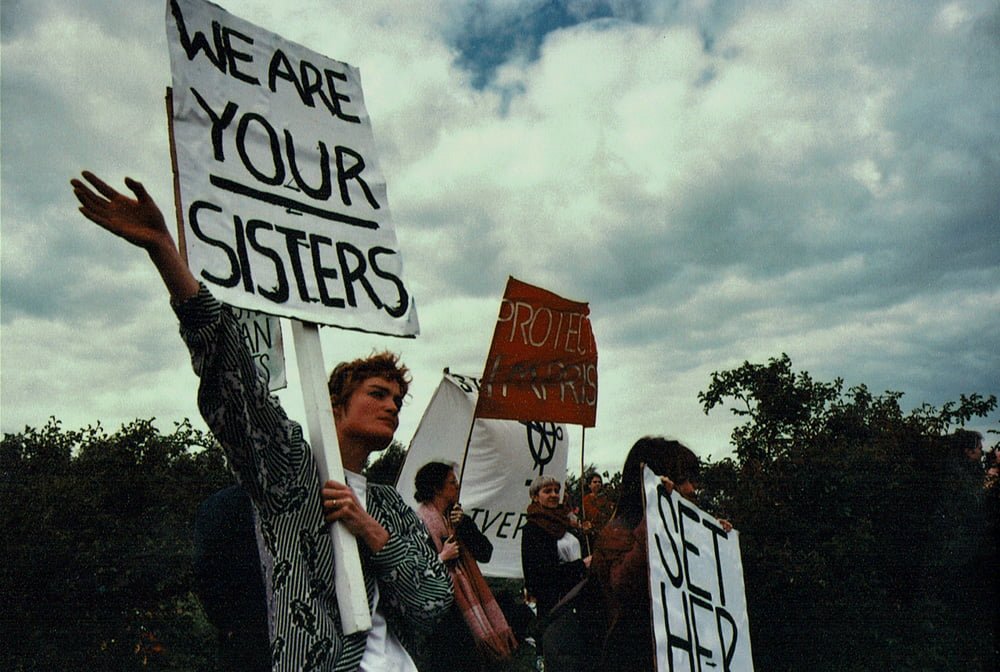
ML: So, how did the photos fit into this?
YA: I think looking at it now the photos are a lot more representative of what it became. In a positive way! Not that it had changed from a horrible experience to a really good one, but I just mean…
TT: I guess we did get more decorations… and the pictures make it look a lot nicer than it was! (laugher)
YA: I loved the decorations! It was always a nice surprise to come and see some giant new thing.
TT: We should definitely mention Louis, who moved to Liverpool after one of the parties and ended up building giant animals for us.
AN: Yeah, he’s one of our best friends now! He came to Liverpool, came to the party and loved it and stayed for the entire weekend including clean-up. And then when there was another party he came back…
TT:…. and he kept building these giant animals for us!
AN: That sounds like an embellishment, but it really wasn’t, they were enormous. One time I was kinda joking with him saying it would be great if you could get a giant head projected onto the dance floor that watches people while they’re dancing. He just said ‘Yeah, let’s do it’. So we did! He made this little booth that you could stick your head in, in a wardrobe, and on the wardrobe he put a sign saying ‘Please read this story for instant fame.’ You would put your head inside this little black thing, and there was a tiny piece of writing and you have to squint at it and a camera that you couldn’t really see projected your face onto the dance floor. So it looks like you’re squinting at everyone! That was pretty cool.
ML: Yetunde, do you want to tell me a little bit about your process? Were they candid shots or was there something you were specifically focusing on?
YA: Yes, a lot of them are candid because I don’t like staged shots. It’s not how people are, they don’t just stand there waiting for a picture. I found it a very natural experience, I never really felt like I was looking for something, I was just aware and then I’d see it, and I’d take a picture.
ML: I think when you’re looking at the picture that’s what it feels like – a record of a good party. Do you usually take pictures of people, outside of the parties?
YA: I don’t really do any kinds of specific photography, like architecture. It’s mostly just people. People doing things.
AN: I don’t know if that’s intentional but so many of the photos I’ve seen I think ‘Oh, that photo really catches that vibe of what was happening’. I don’t know if it’s because I can appreciate the context, but they really do tell a story.
YA: I won’t lie, I’m a really nosy person! It’s the storytelling element of it, because if you’re going tell a story, intervening in the story doesn’t make it authentic. So being nosy, snooping on people and trying to be incognito while carrying a giant flash around, that’s what I did! One of the things I particularly liked were the photos of people that I didn’t know, that I almost felt like I knew through the photos. You get to know them afterwards and it’s almost like you’ve created a story in your mind; this is this person and this is what they get up to. Either it turns out to be pretty close, or nothing like that at all.
I’d say the parties have changed my life in quite a tangible way, I met lots of people that I hold very dear to my heart now whom I never would have met otherwise. It’s also led me onto so many other paths, like social activism. So it’s actually played a huge part in me becoming who I am. It seems fairly over-dramatic when I say it like that but I genuinely do feel like that, because I don’t know that I would have been so direct in trying to get involved in initiatives that concerned asylum seekers and migrants. I’d definitely say the parties were a catalyst for it.
ML: It’s great that it was so organic. Especially and if you feel like it has influenced your life in some way then it’s nice to have a record of it.
YA: I do think about it a lot actually, that in 20 or 30 years I’ll be able to looks back on these memories and have this surge of emotion for a time past. That’s a really nice part of it; the photos have a nostalgic feel to them anyway because they’re on film, so double whammy!
ML: They’re shown in a slide show projected onto the wall, alongside the zine. Were there any big decisions made about how they’re exhibited?
YA: I’m just not a huge fan of frames, I like them as a separate part, but not for photographs. I felt like it was simple, straightforward, clean. And representative of the party as well. That’s all it was, a damn good party!
ML: This is a question for everyone: do you feel like you contributed to affecting change?
TT: Yeah. I think I’m always surprised in general, at how you can go out and put something into the world; you create a situation and that has a knock-on effect on other things. Mostly good things. Friendships, relationships, we had lots of interesting conversations about sociality… It’s the intellectual benefit of it too, which sounds really kind of lame, but that was actually it.
AN: The whole point is that you create a space that’s open and inclusive, where there’s no door policy, asylum seekers and refugees get in for free – there aren’t really that many spaces like that in society. The logistics of making a space like that, and also keeping it safe and fun for the people that are there…
TT: There’s a balance that needs to be maintained. It is a fine line, keeping people safe and doing it for your own enjoyment as well. And the ethical and moral aspects of it too. I guess it’s affected change in us as well as in a way that maybe we haven’t really calibrated yet, in our immediate social surroundings.
YA: I think it’s affected change in a way that people may not have spoken to you guys about, their eyes have been opened in some way and they’re more willing to get involved.
TT: We met a lot of people through Asylum Link. Usually you meet someone and there might be no reason to see them again but when you have a monthly party you see them regularly, and it becomes a way of checking in on someone. Then you become friends, and then they invite you round for dinner. So in this way, it really worked.
‘Open 3: Affecting Change’ is at Open Eye Gallery until 17th September 2017.
A new project from some of those involved in the events is launching next month. Sisbis is a night produced by women, featuring all-women DJs. All proceeds go towards MRANG, a local charity that helps women refugees and their children. Details here.

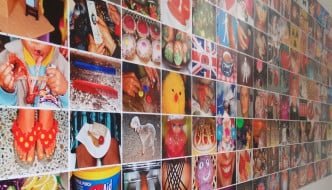
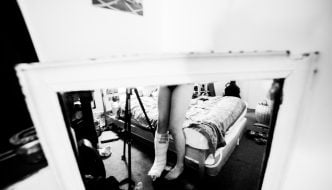
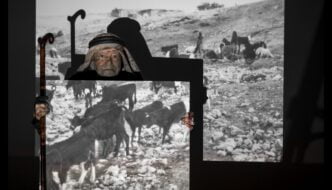
Comments